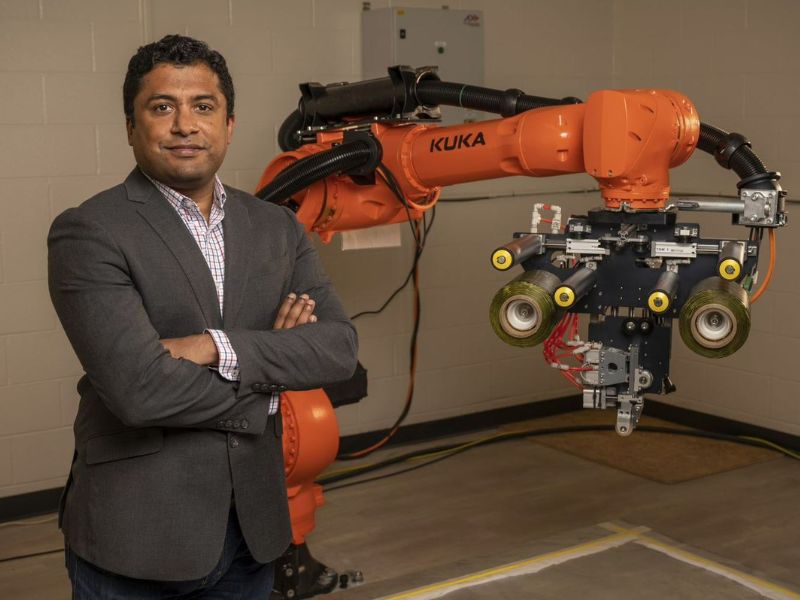Engineer looks to transform manufacturing of unmanned aerial vehicles
A University of Texas at Arlington researcher is leading a project to bring automation to smaller composite manufacturing for unmanned aerial vehicles (UAVs) and urban air mobility (UAMs) vehicles.

Paul Davidson, a UT Arlington assistant professor in the Department of Mechanical and Aerospace Engineering (MAE), is leading the $249,770 Air Force Research Laboratory-funded project.
“In the future, UAVs and UAMs will become ubiquitous, which means we will need to make high-performance composite material structures at a fraction of the cost and time,” Davidson said. “We are developing new manufacturing processes that combine state-of-the-art automated composite manufacturing and traditional molding to increase production output and improve structural performance.”
Davidson said most composite manufacturing for larger aircraft is performed with automated robotic manufacturing. But similar automation is difficult on smaller UAV or UAM vehicles because of their complex shapes and high curvatures.
Composite materials compose nearly half of larger modern commercial aircraft. For UAVs, this number goes up to nearly 90%, he said.
“When the UAVs and UAMs get smaller and with high curvatures, the composites face several challenges like shearing and wrinkling, which lead to poor structural performance and overdesign,” Davidson said. “On a larger scale, we can have robots do the work. We need to bring that to a smaller scale.”
He said the U.S. Air Force must have reliability in the field.
“These units aren’t inexpensive,” Davidson said. “The guidelines are, therefore, stricter. They can’t fail on the battlefield. We must ensure combat readiness for the Air Force.”
MAE Chair Erian Armanios said Davidson’s work has the potential to transform smaller aircraft composite manufacturing.
“It’s a gamechanger in manufacturing” Armanios said. “It’s an exciting project because of the growth of UAVs and UAMs and their broad applications.”
The new manufacturing technique will be developed in UTA’s Laboratory for Advanced Materials, Manufacturing, and Analysis. The laboratory has developed a unique Automated Fiber Placement system for research on advanced composite manufacturing.
“The manufacturing research cell provides UTA with a state-of-the-art system to investigate and develop new technologies,” Davidson said. “It also allows our students to learn advanced manufacturing, which is crucial for future workforce development.”